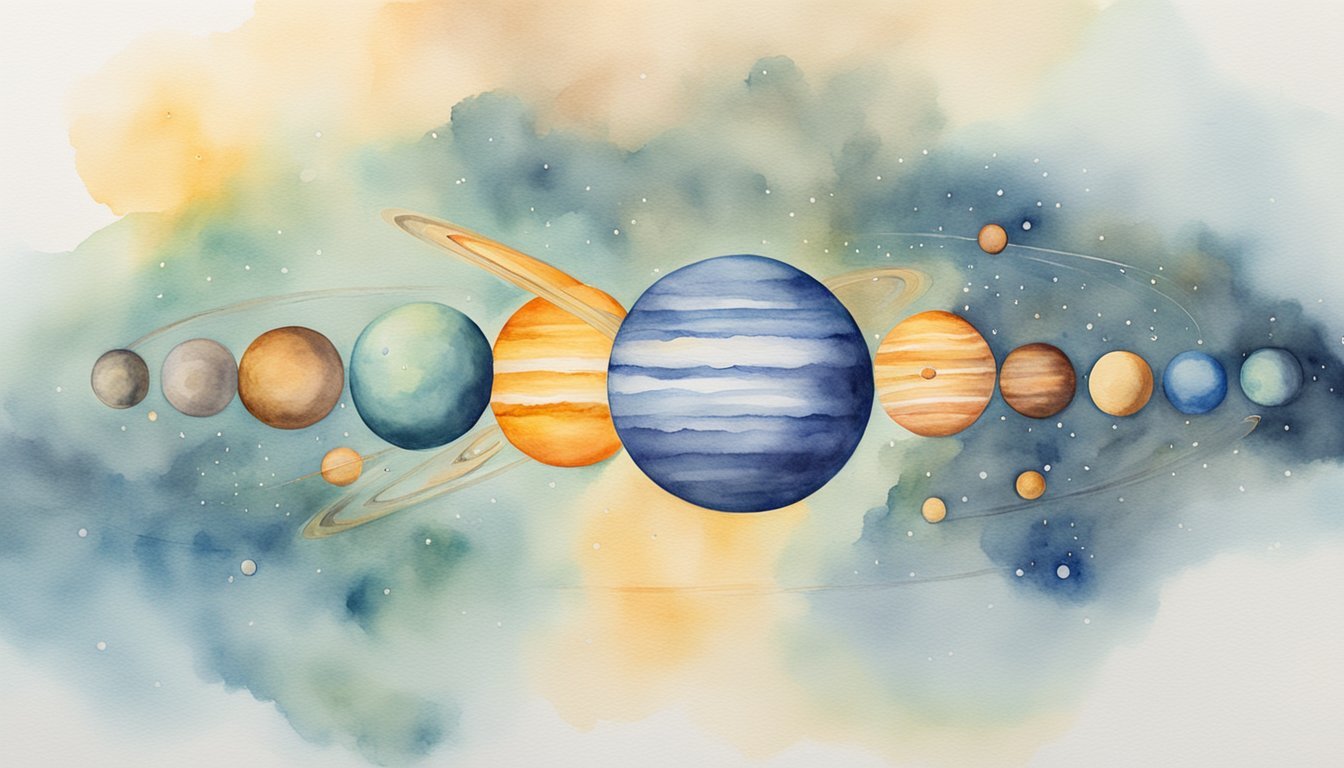Understanding Planetary Alignments
In the realm of astronomy, planetary alignments are rare celestial events that capture the imagination of both scientists and sky-watchers alike. These alignments occur when planets position themselves on a similar celestial longitude when viewed from Earth.
Defining Planetary Alignment
Planetary alignment refers to the positioning of planets in a line or a close formation that can be observed from Earth. This phenomenon happens because, although the planets orbit the Sun at different distances, speeds, and inclinations, there are moments when their orbits bring them into what appears to be a line from our perspective. Planetary alignments are an interplay of positioning and timing, and while they might seem close from our vantage point, the planets remain separated by vast distances in space.
History of Notable Alignments
Throughout history, there have been several notable planetary alignments that have intrigued astronomers. For instance, the great conjunction of Jupiter and Saturn in 2020 received widespread attention due to its rarity; such events only happen every 20 years, and the 2020 alignment was especially close. Another historically significant alignment occurred in 2005 when five planets lined up in the sky and could be observed with the naked eye from many parts of the world.
Planetary Alignment Events
Planetary alignments vary in scope and scale, with some including as few as two planets, like a conjunction, or several planets, which is sometimes referred to as a planet parade. The next significant alignment is expected to occur on June 3, 2024, when six planets — Mercury, Mars, Jupiter, Saturn, Uranus, and Neptune — will align. For stargazers, certain vantage points on Earth, such as the Northern Hemisphere, will offer a more favorable view of this phenomenon.
Astronomy and Planetary Motion
The study of planetary alignments falls within the broader discipline of astronomy, which examines the movements and interactions of celestial objects. Through advancements and observations, institutions like the University of California continue to deepen our understanding of how alignments occur within 3D space. These celestial events allow astronomers to study the gravitational influence of planets on each other and provide valuable insights into the dynamical structure of our solar system.
Does the Number of Moons Saturn Has Affect Its Celestial Alignments?
Saturn’s moon count significantly influences the planet’s gravitational interactions and celestial alignments. Each moon, with its unique mass and orbit, contributes to the dynamic balance within Saturn’s system, affecting not only the planet’s rings but also its alignment with other celestial bodies in the solar system.
Viewing Planetary Alignments

The celestial dance of planetary alignments captivates stargazers with its rarity and beauty. These events, often referred to as planetary parades or conjunctions, offer a unique opportunity to observe multiple planets in a single view.
Best Practices for Observing the Night Sky
When planning to observe the night sky, it is essential to choose locations with clear skies and minimal light pollution. This enhances the chances of spotting faint objects and enjoying an unobstructed view. For celestial events like the Lyrid meteor shower or when planets like Jupiter, with its famous rings, come into alignment, finding a dark spot away from city lights can make a significant difference.
Future Planetary Alignments to Watch
Notable future planetary alignments include a parade of planets where Mercury, Mars, Jupiter, Saturn, Uranus, and Neptune will align in the early morning of June 3, 2024. While Mercury, Mars, Jupiter, and Saturn will be visible to the naked eye, Uranus and Neptune will require a telescope. Another alignment to anticipate occurs when Venus and Mars meet in the sky, an event that offers a spectacular view for those with a pair of binoculars or telescopes.
Planetary Viewing Conditions and Equipment
For a successful viewing, equipment ranging from a pair of binoculars to advanced telescopes can be employed. Binoculars are suitable for viewing brighter planets like Venus or the crescent moon, while telescopes can reveal more distant or faint planets, including the moons of Jupiter like Io. The best viewing conditions are found under clear skies, preferably in a location that provides an unobstructed view of the horizon, particularly the eastern horizon during morning observations.
Impact of Planetary Alignments on Earth
Planetary alignments, while visually stunning, have no scientific impact on Earth; they are purely observational phenomena. Despite popular beliefs, conjunctions and planetary parades do not cause any gravitational effects that would affect Earth’s environment or human activities. Celestial events, like the alignment of planets in Pisces or planetary parades, remain significant for astronomers and astrophysicists as exciting opportunities for public observing, education, and simply appreciating the grandeur of our solar system.

